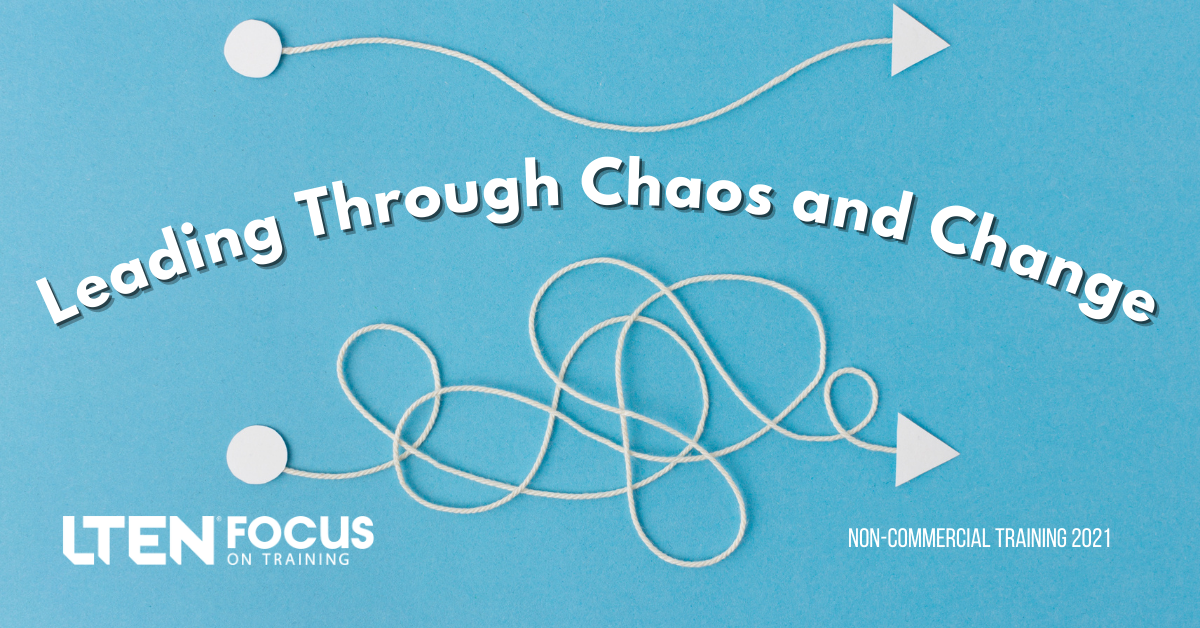
Leading Through Chaos and Change
Feature Story – By Kristin Hall
Success can depend on how much change employees are willing to adopt
The contract research organization (CRO) market experienced a sudden growth in 2020 due to the surge in research and development (R&D) efforts related to COVID-19 therapies and vaccines. This led to recent big acquisitions in the market and may indicate a trend of future mergers or partnerships with integrated e-clinical platform providers as global CROs focus on building capabilities in innovative patientcentric clinical trial delivery models.
This leads to needs for the organizations to shift their internal structure to better align with the new way forward.
Uncertainty and ambiguity are constant in organizations, and employees are experiencing these changes as well, just on a more personal level. Guiding a workforce through times like this calls for a more direct, decisive approach. But managing individuals is often the most challenging and critical piece of an organization’s transformation.
 A New Perspective?
A New Perspective?
With a well-defined perspective on organizational change, leaders also need the same attitude regarding individual change.
An organization’s success can depend on how much change employees are willing to adopt. According to Gartner, the amount of change an average employee could cope with in 2019 before burning out was cut by 50% in 2020. And with more people retiring, being laid off and the workforce shortage, organizations are merging teams and shifting responsibilities, having to do a lot more with a lot less.
Leaders who inadequately manage that change simply create more fatigue and added stress.
A Well-Planned Approach
Change has always occurred at the organizational level, and the need for a wellplanned approach to change management has never been more crucial. Organizations had to make the decision early in the pandemic how they would manage the massive changes.
Clinical trials have undergone a fundamental shift over the past year because of the pandemic, with many traditional processes taking on new formats to increase clinical development efficiencies.
R&D costs, technology and digital modernization of clinical trials, as well as advanced therapies and personalized medicine, are key areas impacting clinical research organizations. This has resulted in organizational change occurring in three key areas: people, process and technology.
Organizations are restructuring due to changing research demands and remote clinical trials. New job titles, shifting teams and functions, and new working mindsets are being put in place to achieve efficiency. Organizations are implementing new technology tools to insert more automation and innovation. A deliberate and thoughtful approach is required to execute these changes well.
 Planning for Change
Planning for Change
Preparing for change is an essential key element for moving from the current state to your future state. Benjamin Franklin said, “If you fail to plan, you plan to fail.”
A staggering 70% of all attempted changes fail. To be in the successful 30%, you must plan for success. You must start with defining the change, and your change strategy. To do this, establish clear goals and define what your future state will look like. This will allow you to measure success along the way and ensure you are accomplishing what you aim to change.
It is important to identify your change management team, your stakeholders and overall sponsorship. Gaining executive sponsorship is also essential in ensuring executive alignment regarding the change. One way to do this is by developing a collaborative change management working group with representatives from each stakeholder group including leadership, communication and training. This team should align on their vision, objectives, roles and responsibilities, and work together to build the overall change strategy.
Conducting a change-readiness assessment for the managers who will be leading, implementing and coaching their teams through the transformation and various changes, is a great way to determine a baseline measurement on the current state of the organization. This assessment, which can be delivered as a simple survey, can assess their personal position on the change, so that you can determine the percentage of detractors and supporters for your change. It also can assess the current trust-level with their direct reports and their confidence-level in implementing and coaching their team on the impending changes.
If you have multiple changes rolling out in a similar time-frame, the change management team can develop a road map to plot the changes that are occurring and determine a phased rollout timeline to reduce change fatigue and resistance. This includes a communication and training plan for managers, providing them with the skills and behaviors to effectively lead change, including a change tool kit that they can utilize with their team.
Implementing Change
In our current environment, we need more resourceful, transformative ways to accomplish clinical research. Now is the time for looking at new, creative ways to conduct clinical trials versus doing things the way they have always been done.
For example, are there better ways to train our teams to access information and data? We need to reevaluate the whole infrastructure of clinical trials to become more operationally nimble by taking advantage of new opportunities afforded by technology.
Now it’s time to turn that plan for change into a reality. Even the most carefully planned programs can fail because of poor, or even mediocre, implementation. The greatest impact on an effective change outcome stems from ownership of and commitment to change. This involves managing the conversation between the people leading the change effort, and those who are expected to implement the new strategies, managing the organizational context in which change can occur, and managing the emotional connections that are essential for any transformation.
Craft messages to contain the why, the what’s-in-it-for-me and the what-does-it-mean, in order to reduce the frustration and depression that employees feel with change.
Communicate Away
Using a multi-channel delivery method to communicate and implement changes allows communication to come from the top, bottom and sideways. This provides a better chance for employees to truly hear the message and adopt the change. Using multiple communication methods such as video, email, intranet messages, live meetings and posters also helps employees accept and adopt the message.
Communication should come from multiple levels within the organization, including executive leadership, middle and lower-level management and key change champions within the team to show alignment of the changes across the organization, the benefits of change and how it will meet organizational goals. People managers have the most influence in the organization. It is important to outline for the people managers how to build a strategy for change through the current, transition and future states.
If you are rolling out multiple changes across the organization at once, rather than developing individual change, communication and training plans, analyze the impact of the changes and align the components of the plans to the functions of the organization they impact. Harmonize messages and combined trainings to minimize the overall change fatigue and feeling of impact at one time.
Implementing change requires you to translate the complex changes into a common language that the organization can align to. Being flexible and ready to shift your approach as you listen to your organization can help you create a change-friendly environment.
Sustaining Change
Navigating the pandemic has been an all-encompassing, once-in-a-lifetime challenge. Globally, life sciences companies responding with leadership and sustainment planning are emerging stronger. Life sciences companies continue to respond to areas that can build resiliency going forward.
Preparing for and implementing change are both very challenging for any organization. Perhaps the most difficult, however, is sustaining positive change. People have a natural tendency to revert back to what they are comfortable with.
Another challenge to sustaining change is there are often additional or subsequent changes in a row, and with multiple changes going on at the same time, it is hard to sustain individual changes. It is important to plan strategies and tactics for sustaining change from the beginning.
One way to sustain change is to continue constant check-ins and communication, both formally and informally on the overall vision and the “why” of the change. Periodic leadership alignment meetings can also be beneficial in reminding the leadership of their important role in continuing to enforce change with their team and gaining feedback on how well the change is being adopted. Remember to celebrate and communicate quick and long-term wins and recognize change adopters.
The most impactful strategy in sustaining change is measurement. As you are preparing for change at the beginning, it is important to define key performance indicators (KPIs) and future-state behaviors that you aim to see because of the change. In developing KPIs, determine qualitative data points such as a 20% increase in employee retention, or a 15% increase in customer contacts.
Determine how you are going to measure and report against those goals on a regular basis. Use any qualitative measures to develop surveys and coaching guides to ensure the change is being adopted and to gather feedback on the change culture.
You can plan for change and implement change, but maintaining positive change is the most beneficial element of any organization. When it comes to sustaining change, it’s a continually evolving process.
Conclusion
COVID-19 has fundamentally changed our personal and professional lives. With life sciences companies working from remote locations, workplaces are being reimagined from virtual workspaces to new types of offsite collaboration. Life sciences companies are focusing more on individual needs of employees and promoting well-being. This growth in greater connectivity and the blurred geographical boundaries is also widening the pool of talent and access to skills. This evolution of our work environment requires the evolving need to plan for, implement and sustain change.
Managing this change is a process that requires detailed planning, clear goals, open communication and constant attention to feedback, but can directly and positively affect productivity, efficiency and quality of work while increasing revenue and reducing costs. Organizations that invest in change management will never consider that time as wasteful or unnecessary.
Whether it’s one person or an entire organization, it will always be necessary to change behaviors and adopt new processes. Focusing on the people side of change and creating a desire for the change with a culture of motivation toward the future state will allow for consistent and effective change outcomes.
Kristin Hall is vice president of operations for Proficient Learning. Email Kristin at
kristin.hall@proficientlearning.com.








